Suffragettes, Jelly & Roll Mop Herrings: Surprising Recipes from Food History
Food & Drink in History: Module I is a treasure trove of culinary surprises, with a whole host of curious recipes and fascinating, occasionally hair-raising ingredients (search for millipedes, I dare you). Here I present my very own menu of recipes from cookbooks that surprised and delighted me the most whilst researching the resource.
Breakfast - Waterlily Eggs
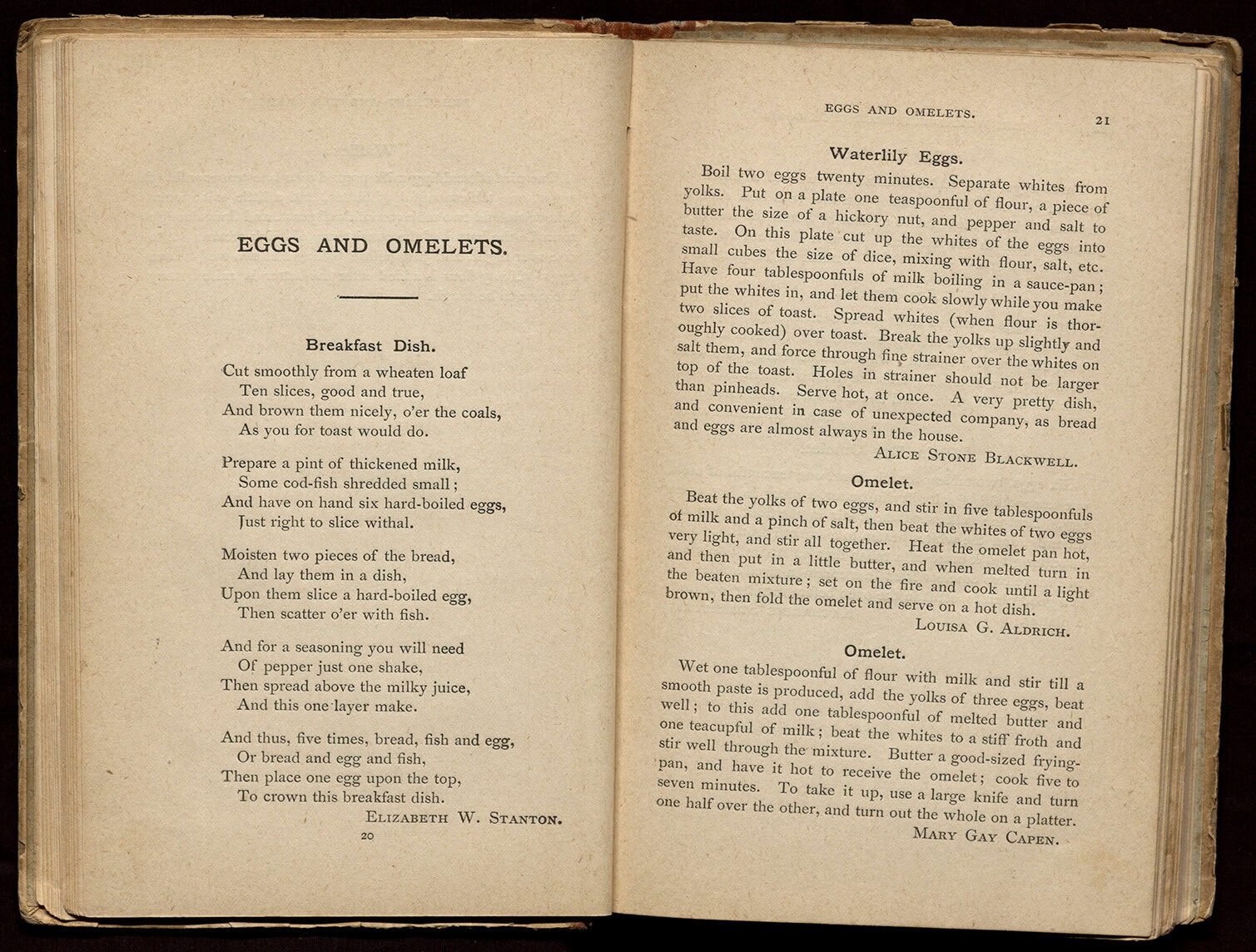
The woman suffrage cook, 1916, © Material sourced from the University of Michigan. Further reproduction without permission is prohibited.
The Women Suffrage Cookbook is one of a few charity cookbooks published in the early 20th century with the explicit aim to raise money for the suffragette cause. Charity cookbooks were a popular way for community and religious groups to raise funds for their organisations, and they’re full of recipes tried and tested by the women who wrote them. Charity cookbooks also gave women an opportunity to be a little subversive. Using a safe feminine space – the cookbook and the kitchen – they were able to both raise money for their campaigns and spread the word about representation. The Women Suffrage Cookbook, published in 1916, contains hundreds of recipes donated from the likes of Lucy Stone, Julia Kellogg and Elizabeth Stanton. The book also contains adverts for feminist societies and “Eminent opinions on women’s suffrage”.
My chosen recipe from this cookbook was donated by Alice Stone Blackwell, who supplies a speedy yet crowd pleasing breakfast dish that one can whip up with household staples if surprised by company. However, what Stone Blackwell and I consider to be fast and convenient somewhat differs, as this recipe calls for twenty minutes of egg boiling, followed by some complex dicing and seasoning, mixing and straining to make what I interpret to be eggs spread on toast. But if it’s good enough for a suffragette, it’s good enough for me.
Lunch: Tomato Salad Ring
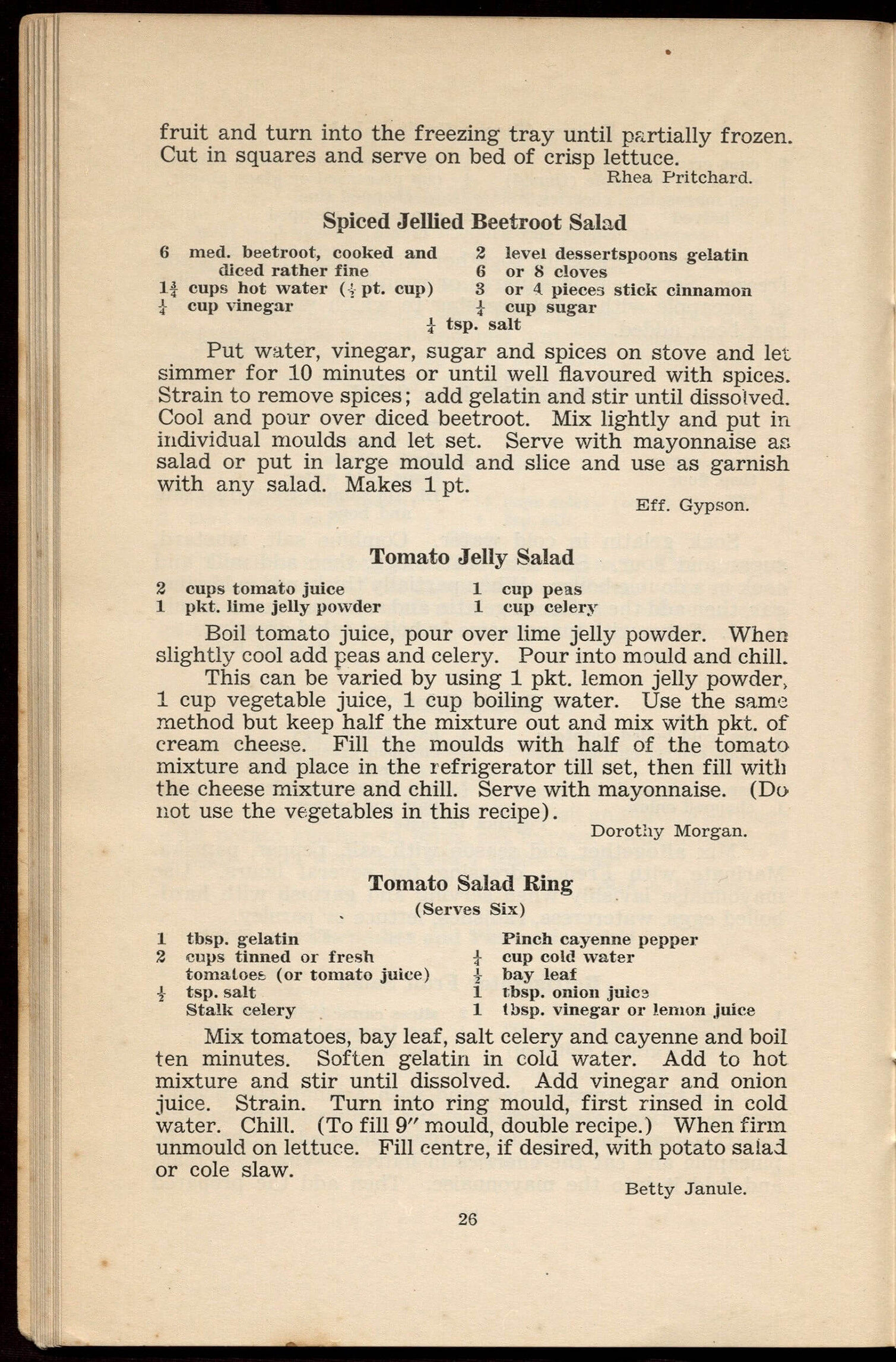
Selected and tested recipes, 1949, © Content compilation © 2019, by the Michigan State University. All rights reserved. Further reproduction without permission is prohibited.
With breakfast done it’s on to lunch, and whilst salad is a popular choice, I’m not so sure that it has always been the healthiest of options. The use of gelatine to make moulded dishes was an innovation of the 19th century. Inventors like Charles Knox created dissolvable gelatine, making it possible to easily create elaborate and exciting sweet treats and savoury center pieces. Adding gelatine to literally any dish was all the rage, as these recipes for salads from American and Canadian Recipes attest. Whilst the combination of jellied meat and vegetables in ring mould and served with mayonnaise or coleslaw may seem hair-raising to us, to a 1930s housewife these dishes were practical, nutritious and elegantly presented.
Dinner Party Menu: Absinthe, Roll Mop Herrings & Raspberry Ice Cream
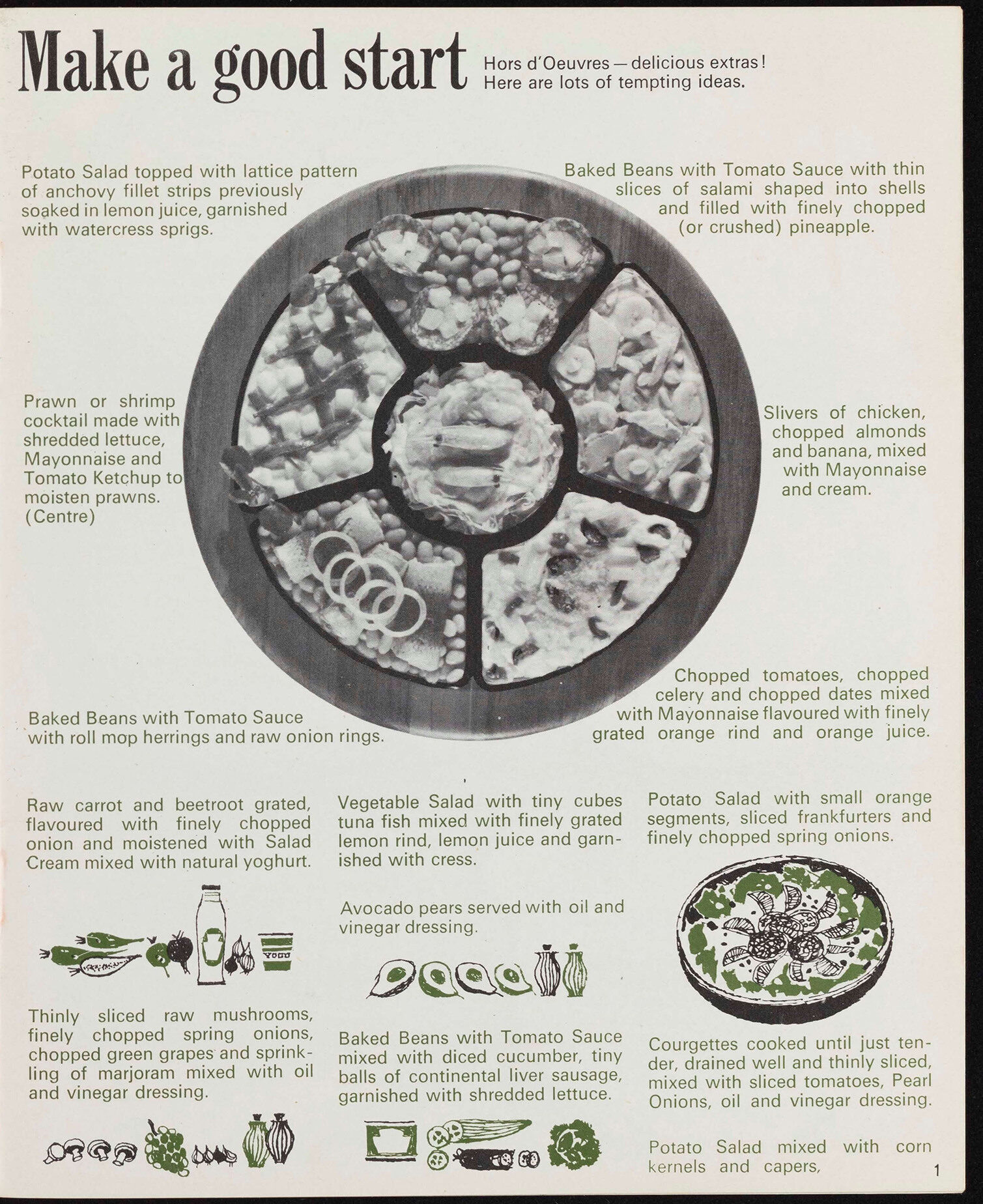
Heinz Publications Recipe Books, [1933-1980], © © Copyright HJ Heinz Foods UK Ltd. Source material from the Heinz Marketing Archive & the H.P. Foods Archive, held at the History of Advertising Trust. Further reproduction without permission is prohibited.
I’m having company for dinner, and every party should start with cocktails and canapes. My Heinz hors d’oeuvres, taken from promotional booklet The Busy Woman’s Cook Book, are bound to be a talking point. Whilst "baked beans with tomato sauce with roll mop herrings and raw onion rings" might be a hard sell, a prawn cocktail was always a winner in 1970s Britain. I’ve taken my cocktail from a gorgeous menu booklet written and illustrated for Usher’s Hotel in Sydney, Australia. Each cocktail is accompanied by lively cartoons illustrating the potential effects of the potent mixtures. My chosen concoction, ‘Back to Life’, is a heady mix of sherry, vermouth and absinthe!
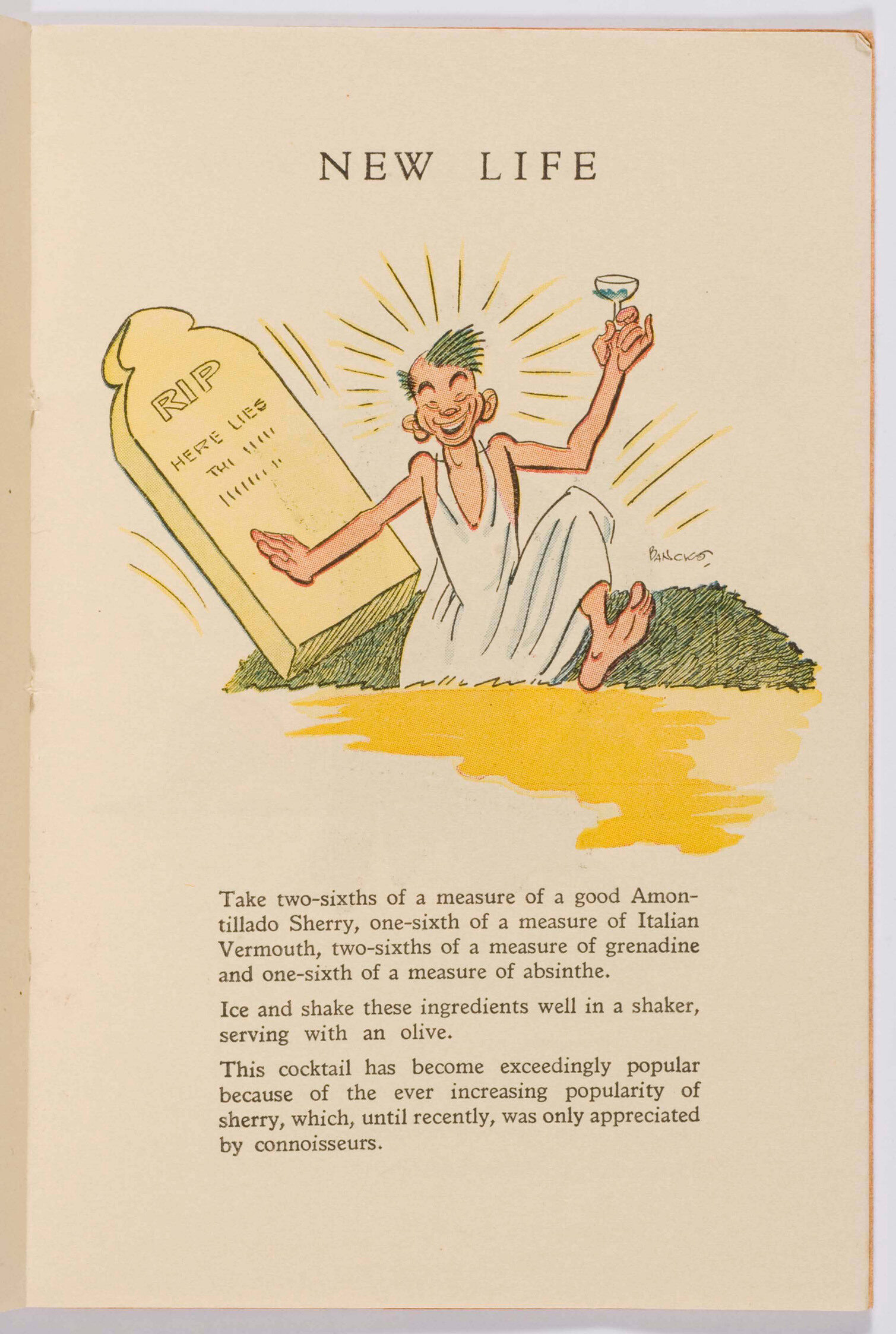
Exclusive cocktails: from the recipes of Usher's H..., 1933, © Miranda Latimer. Material sourced from the State Library of New South Wales. Further reproduction without permission is prohibited.
For the main course, I’ll fall back on a historic version of a family favourite – lasagne. My affection for this crowd-pleasing dish is shared by Frank Sinatra, who records his wife’s lasagne recipe as his favourite meal in Favorite Recipes of Famous Men. This collection of celebrity faves was collated by Roy Ald and is a love letter to America’s "fertile field" of "abstract gastronomia".
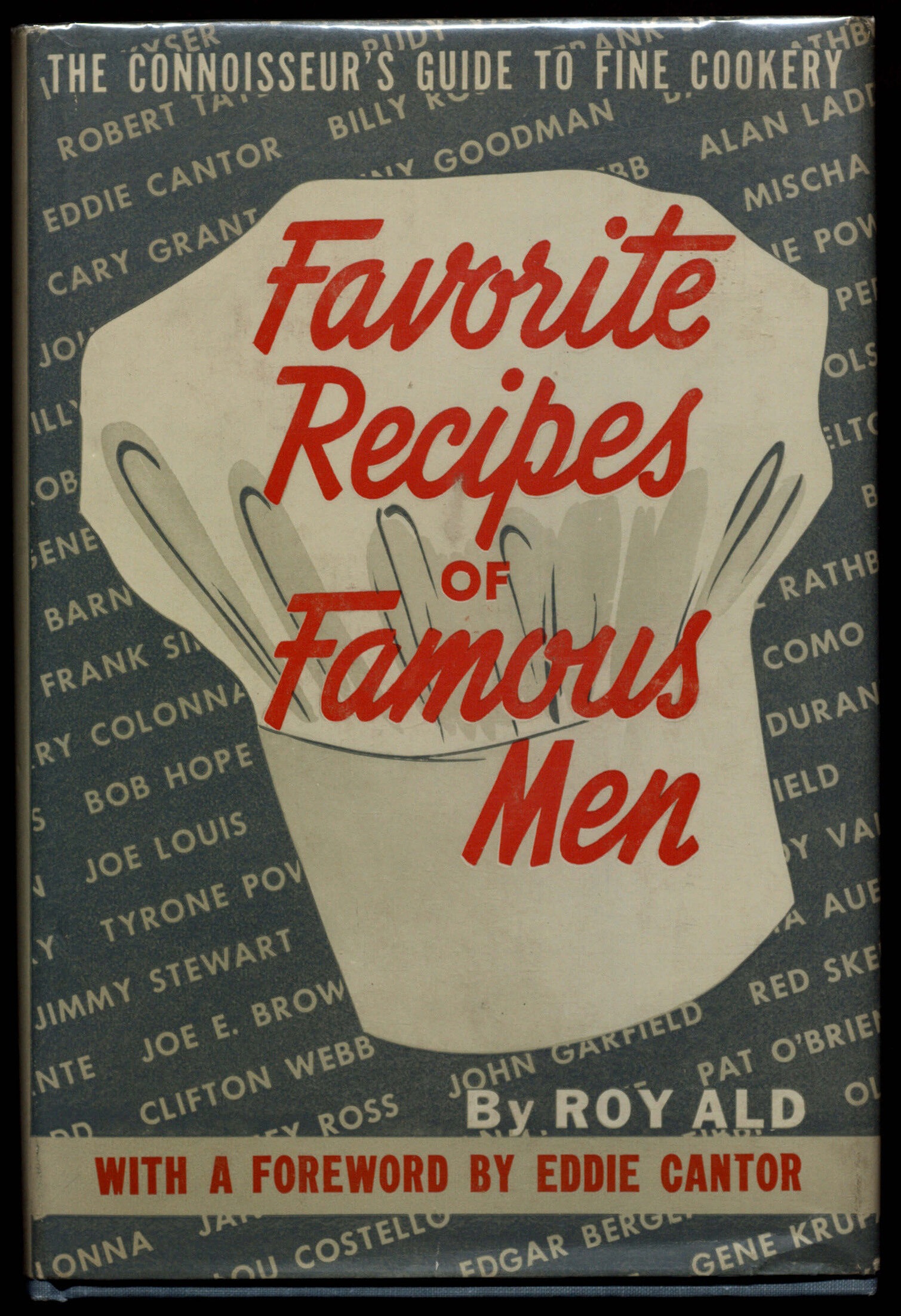
Favorite Recipes of Famous Men, 1949, © Material sourced from the University of Michigan. Further reproduction without permission is prohibited.
Finally, on to dessert, and I’m keeping it simple and serving raspberry ice cream – using the oldest reference I can find in the Food & Drink in History: Module I resource. Ice cream appears in Hannah Glasse’s The Art of Cookery Made Plain and Simple. This influential cookbook was reprinted numerous times in the UK and USA, and was an essential companion to 18th & 19th century cooks. Interestingly, the recipe for ice cream appears in the 1778 version, 31 years after the original in 1747 and eight years after the author’s death. Later editions updated this culinary bible with new ingredients and fashionable recipes. Comparing the 1778 edition from the University of Michigan with the 1747 edition from the University of California, San Diego using the resource’s split screen comparison viewer, it’s easy to start spotting the differences in these two editions.
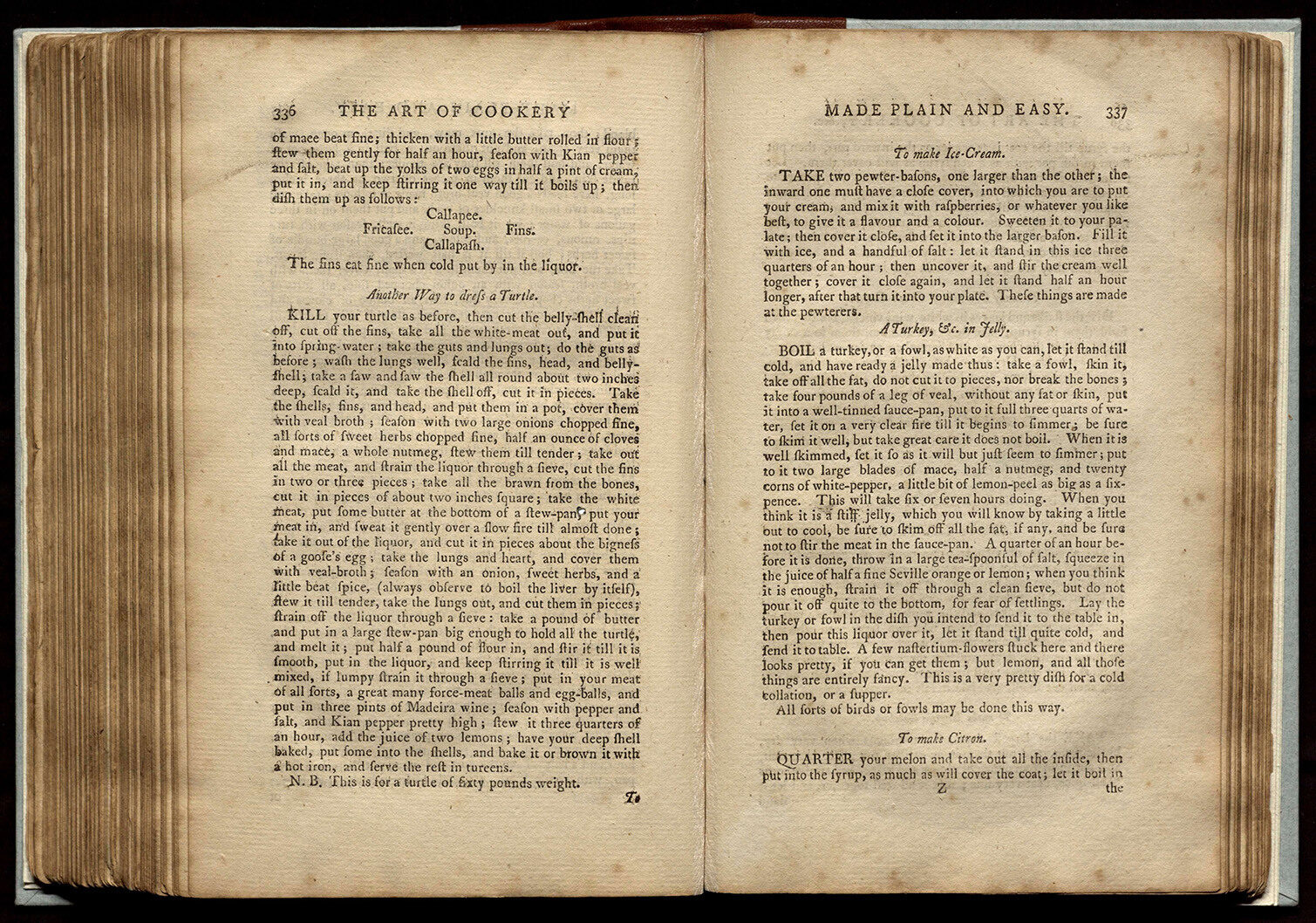
The Art of cookery made plain and easy, 1778, © Material sourced from the University of Michigan. Further reproduction without permission is prohibited.
For more information on Food and Drink in History, including free trial access and price enquiries, please email us at info@amdigital.co.uk.
Recent posts

The blog highlights American Committee on Africa, module II's rich documentation of anti-apartheid activism, focusing on the National Peace Accord, global solidarity, and student-led divestment campaigns. It explores the pivotal role of universities, protests, and public education in pressuring institutions to divest from apartheid, shaping global attitudes toward social justice and reform.

This blog examines how primary sources can be used to trace the impact of young voices on society, particularly during pivotal voting reforms in the UK and the US. Explore materials that reveal insights into youth activism, intergenerational gaps, and societal perceptions, highlighting their interdisciplinary value for studying youth culture, activism, and girlhood across history.
